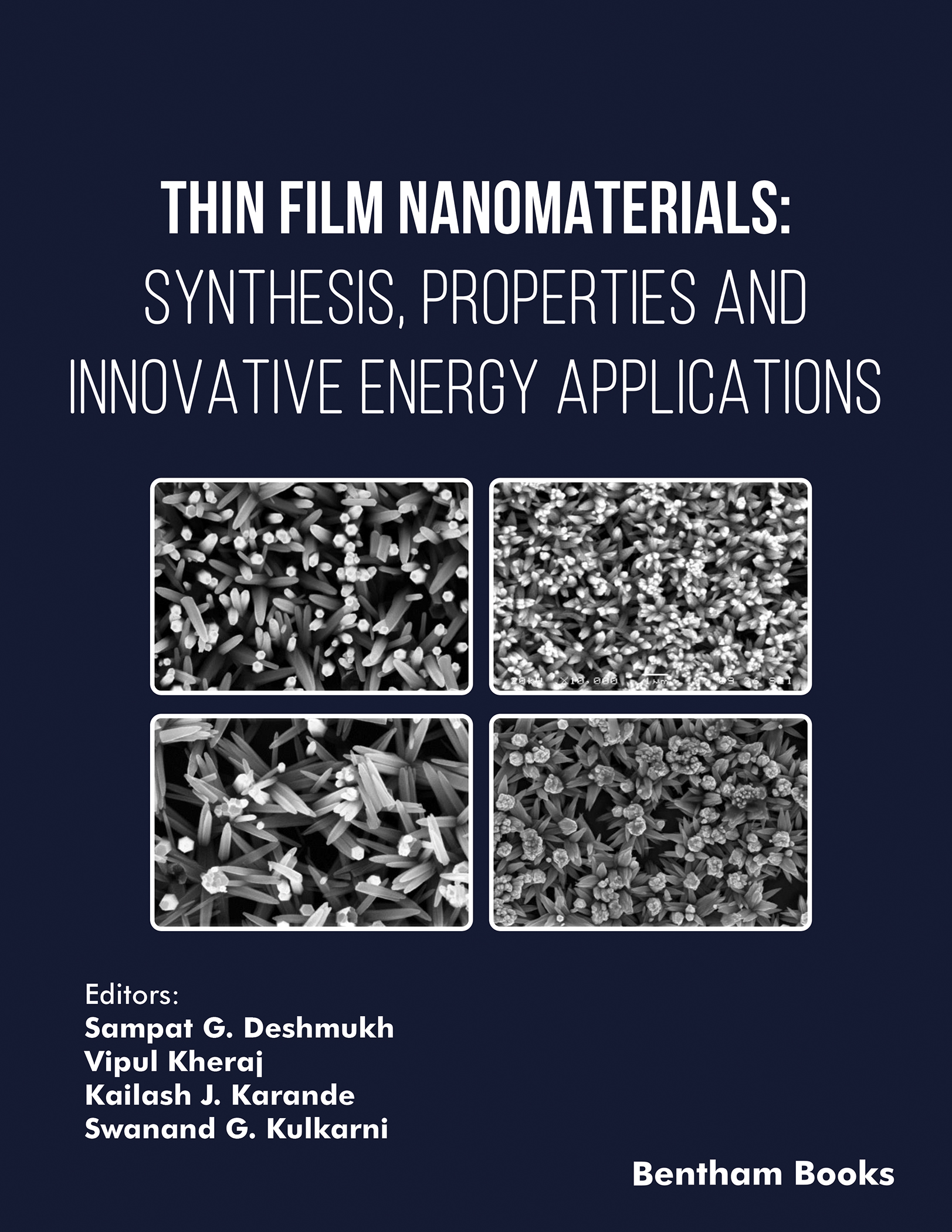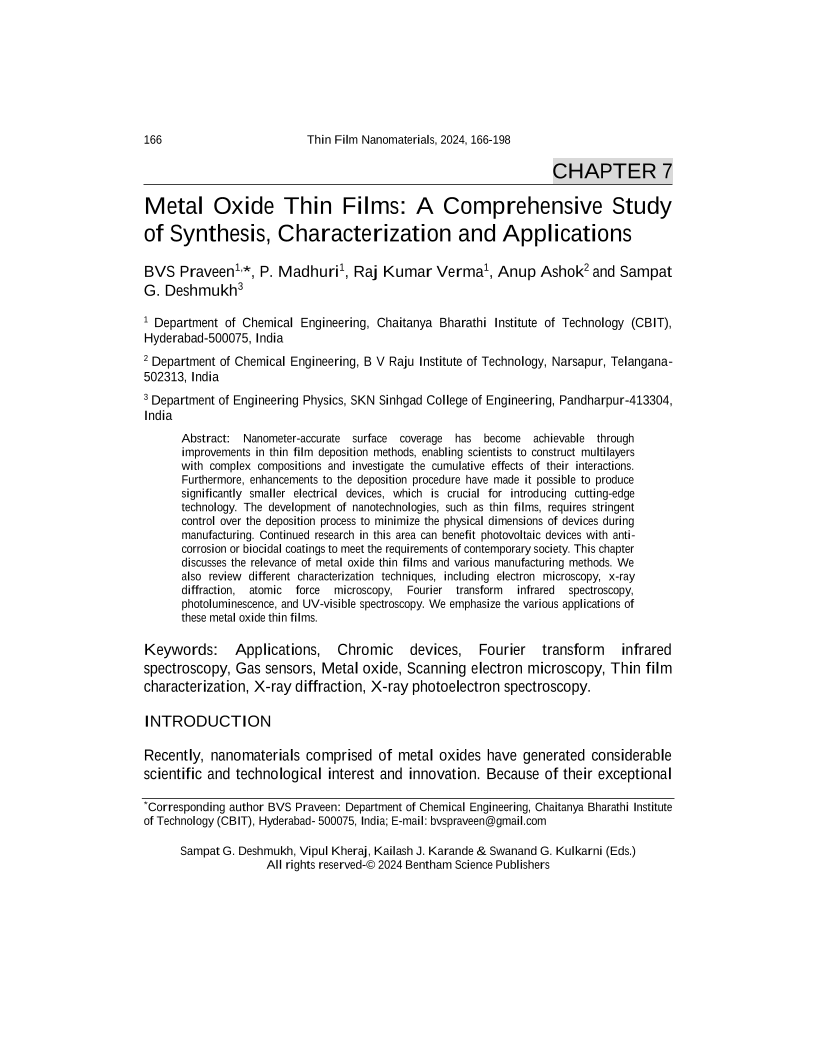- Home
- Books
- Thin Film Nanomaterials: Synthesis, Properties and Innovative Energy Applications
- Chapter
Metal Oxide Thin Films: A Comprehensive Study of Synthesis, Characterization and Applications

- Authors: BVS Praveen1, P. Madhuri2, Raj Kumar Verma3, Anup Ashok4, Sampat G. Deshmukh5
-
View Affiliations Hide AffiliationsAffiliations: 1 Department of Chemical Engineering, Chaitanya Bharathi Institute of Technology (CBIT), Hyderabad 500075, India 2 Department of Chemical Engineering, Chaitanya Bharathi Institute of Technology (CBIT), Hyderabad-500075, India 3 Department of Chemical Engineering, Chaitanya Bharathi Institute of Technology (CBIT), Hyderabad-500075, India 4 Department of Chemical Engineering, B V Raju Institute of Technology, Narsapur, Telangana 502313, India 5 Department of Engineering Physics, SKN Sinhgad College of Engineering, Pandharpur-413304, India
- Source: Thin Film Nanomaterials: Synthesis, Properties and Innovative Energy Applications , pp 166-198
- Publication Date: July 2024
- Language: English
Metal Oxide Thin Films: A Comprehensive Study of Synthesis, Characterization and Applications, Page 1 of 1
< Previous page | Next page > /docserver/preview/fulltext/9789815256086/chapter-7-1.gif
Nanometer-accurate surface coverage has become achievable through improvements in thin film deposition methods, enabling scientists to construct multilayers with complex compositions and investigate the cumulative effects of their interactions. Furthermore, enhancements to the deposition procedure have made it possible to produce significantly smaller electrical devices, which is crucial for introducing cutting-edge technology. The development of nanotechnologies, such as thin films, requires stringent control over the deposition process to minimize the physical dimensions of devices during manufacturing. Continued research in this area can benefit photovoltaic devices with anticorrosion or biocidal coatings to meet the requirements of contemporary society. This chapter discusses the relevance of metal oxide thin films and various manufacturing methods. We also review different characterization techniques, including electron microscopy, x-ray diffraction, atomic force microscopy, Fourier transform infrared spectroscopy, photoluminescence, and UV-visible spectroscopy. We emphasize the various applications of these metal oxide thin films.
-
From This Site
/content/books/9789815256086.chapter-7dcterms_subject,pub_keyword-contentType:Journal105

